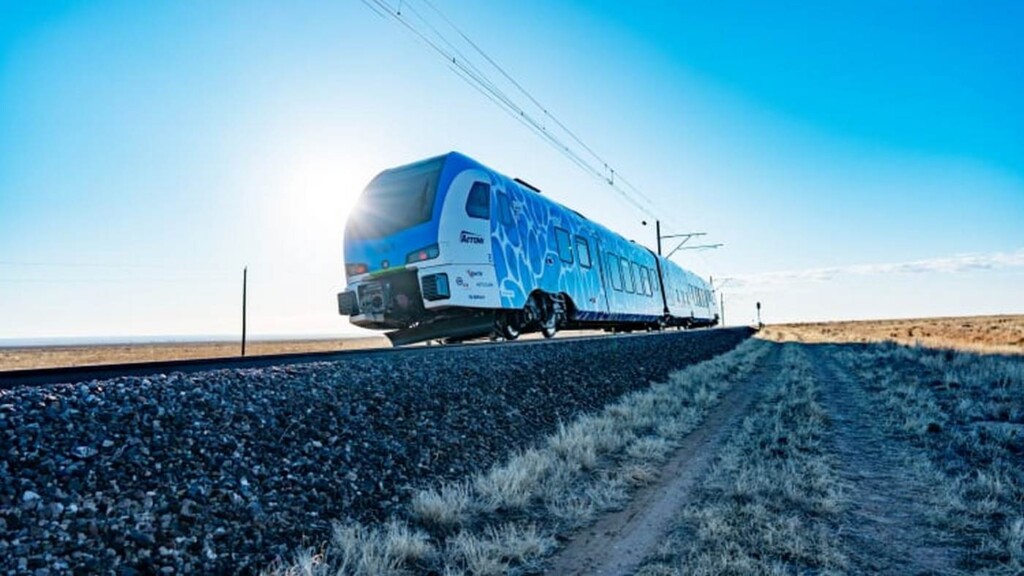 credit – Stadler, released
credit – Stadler, releasedIn Los Angeles County, a new, low-emissions commuter train is helping combat local and global smog by powering itself with hydrogen fuel cells.
Liquid or gaseous hydrogen is considered the best green alternative to the heavy fuels that power society’s largest machines, and this ZEMU train is just a few months away from starting routine service from San Bernadino and Redlands to LA proper.
ZEMU stands for zero-emissions multiple units, and possesses several advantages over other decarbonized rail transport. Electric trains recharge via overhead powerlines, but these require millions in funding to install and maintain and aren’t practical for long distances.
“The reality is it can be used anywhere existing rail happens now,” says Tim Watkins, chief of legislative and public affairs at the San Bernardino County Transit Authority, the agency behind the project. “It doesn’t require a new capital investment into infrastructure.”
Manufactured by the Swiss company Stadler, ZEMU trains take on hydrogen fuel that is split into hydrogen molecules, generating energy that recharges an electric battery that powers the train’s motors. The battery is also recharged by breaking, and the only emission of any sort is water vapor.
“I think it’s going to enable a lot of places to decarbonize without having to make extremely expensive investments in infrastructure,” Watkins told Fast Company Magazine.
HYDROGEN POWER COMING ONLINE:
Currently undergoing the final testing phase on local tracks, service is slated to begin in early 2025. At the moment, the trains use hydrogen that’s been created via fossil fuels, so while the localized emissions are still zero, the trains still have a carbon footprint.
Green hydrogen, made using renewable energy sources, is expected to be available in the not-too-distant future, but even if the trains lead to CO2 entering the atmosphere, as Adele Peters at Fast Company details, San Bernadino needs zero-emissions transport fast.
The area was recently given an ‘F’ grade for air quality by a leading air quality index survey, and suffers from more days of smog than almost any other city in America.
SHARE This Story With Your Friends From LA OR On Social Media…
Source link

